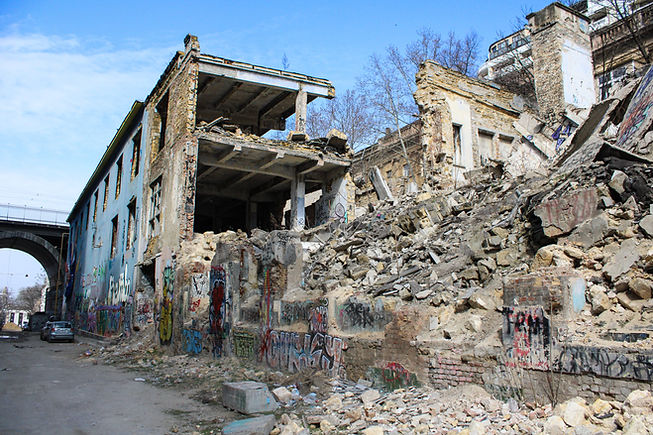
Earthquakes
Every year California experiences approximately 500 earthquakes that are large enough to be detected and felt by local residents. Since Orange County has a number of seismic faults, earthquakes are almost an expected part of living here. Residents should be prepared by identifying safe places in each room of their homes and taking other precautions, such as securing furniture and checking for gas leaks.
Federal, state, and local emergency management experts and other official preparedness organizations all agree to "Drop, Cover, and Hold On" during an earthquake. The Great California ShakeOut offers a tremendous amount of information and resources for earthquake preparedness.
In MOST situations, you will reduce your chance of injury if you:

DROP wherever you are, drop down to your hands and knees and hold onto something sturdy. If you’re using a wheelchair or walker with a seat, make sure your wheels are locked and remain seated until the shaking stops.

COVER your head and neck with your arms. If a sturdy table or desk is nearby, crawl underneath it for shelter. If no shelter is nearby, crawl next to an interior wall (away from windows). Crawl only if you can reach better cover without going through an area with more debris. Stay on your knees or bent over to protect vital organs.

HOLD ON if you are under a table or desk, hold on with one hand and be ready to move with it if it moves. If seated and unable to drop to the floor, bend forward, cover your head with your arms and hold on to your neck with both hands.
The main point is to not try to move, but to immediately protect yourself as best as possible where you are. Earthquakes occur without any warning and may be so violent that you cannot run or crawl; therefore, you will most likely be knocked to the ground where you happen to be. You will never know if the initial jolt will turn out to be the start of the big one. You should Drop, Cover, and Hold On immediately!

"Drop, Cover, and Hold On"
If an earthquake happens, protect yourself right away:
-
If you are in a car, pull over and stop. Set your parking brake.
-
If you are in bed, turn face down and cover your head and neck with a pillow.
-
If you are outdoors, stay outdoors away from buildings.
-
If you are inside, stay and do not run outside and avoid doorways.
What to do when an Earthquake Starts
Learn more:
-
Watch videos of earthquake simulations, sign up for an annual earthquake drill and check out regional hazard maps at The Great California Shakeout.
-
Get the latest statistics on earthquakes at the Southern California Earthquake Data Center and check out their latest video.
-
Prepare your home by noting earthquake precautions at Ready.gov’s Earthquake section.
-
Review the latest on Orange County earthquakes from the Orange County Register Earthquake Central.
-
Sign up for earthquake alerts at United States Geological Survey (USGS).
-
Tell the U.S. Geological Survey if you’ve felt an earthquake
-
Download the American Red Cross Earthquake Tip Sheet to learn what to do before, during, and after an earthquake
-
Be informed about earthquake faults in Orange County by downloading the California Fault Activity Map





